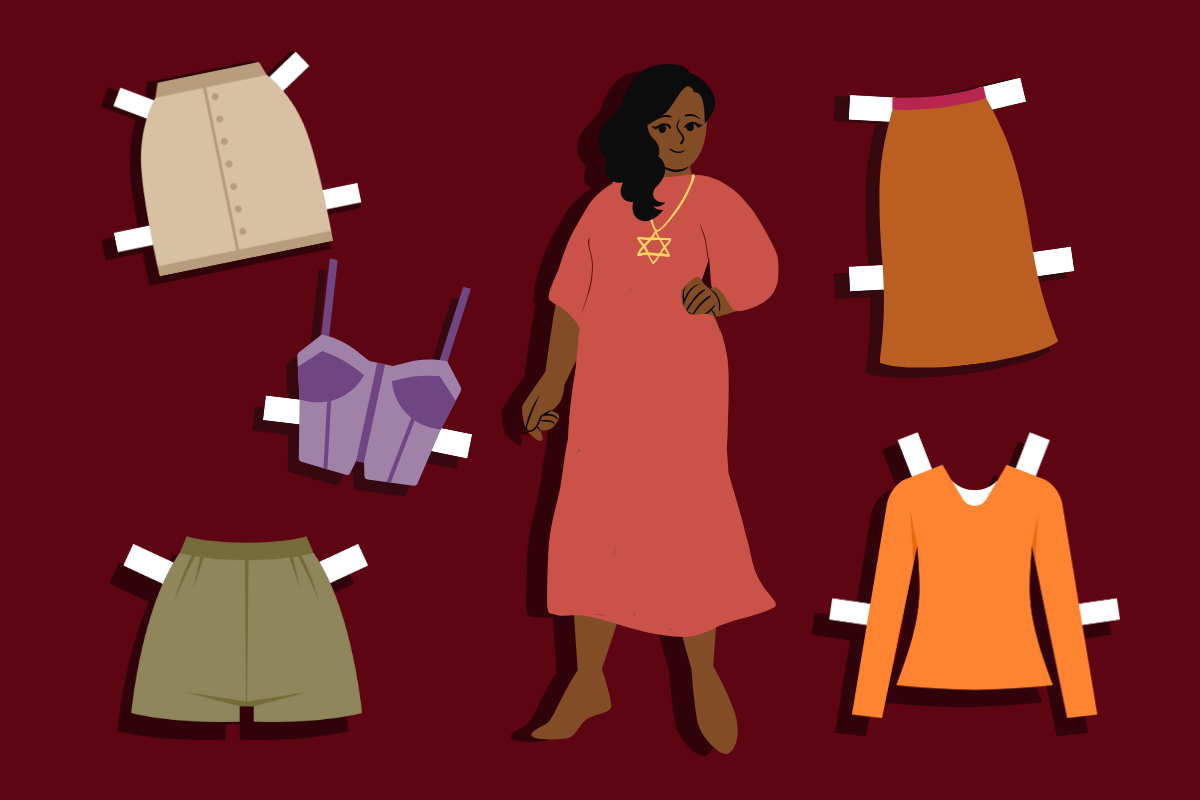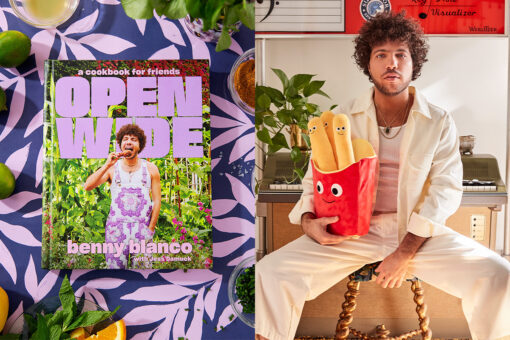This February I went to a friend’s birthday party dressed as Eeyore. It was a letter E-themed birthday party and I spent the hour before rummaging through my closet; nothing felt right. I could be emo, Elvira, edgy or an e-girl but all the clothes weren’t what I wanted to wear. In blue denim and a gray sweater, I didn’t set up that evening to be the last time I would wear jeans — it was just something that happened.
I had been on a journey to become more of an observant Jew over the past few months and I had slowly been changing my dress to reflect that. The journey started with saying Modeh Ani when I woke up, then moved towards saying Shacharit (morning prayers) when I woke up early enough. Getting rid of my jeans was something I knew would happen eventually but I was giving myself grace to feel out when that would be.
The day after the party, I woke up for work, marched into my brother’s room and shouted, “I’m going to stop wearing pants!” And I did. I’d made this promise to stop wearing pants altogether four or five times before, but I just hadn’t been able to stick with it. But I knew this time would be different. Something about taking my jeans off when I got home from the party the night before had felt final. I took off the costume and tucked away my formerly beloved jeans — all 14 pairs. It felt easy.
That is, until I went to visit my best friend and was stuck with a “too-short” dress in what felt like 30 degree weather.
I had woken up to one of those days where none of my clothes looked right, and the dresses I’d haphazardly tossed into my bag for my trip were much shorter than I remembered them being. Nothing was really wrong with these dresses — in fact I had worn them many times before and I still own them. It was just that in the weeks prior I had really changed how I dressed. Following more traditional modesty guidelines, I tended to stick to skirts and dresses that came below the knees and these dresses were not that.
I felt naked, uncomfortable and frustrated. I had never had this reaction to my clothes before. So why couldn’t I just wear the dress?
My friend offered to take me to Marshalls, where I bought three different pairs of leggings. After the initial moments of feeling strangely exposed, I felt good. I caught my reflection in the store window and felt cute — but still conflicted. I looked nice and trendy but there was a voice in the back of my head telling me I didn’t look Jewish, because leggings aren’t considered traditionally modest.
As a Black Jew I’m often assumed to be an outsider in Jewish spaces, especially more observant communities, even though I am Jewish and have an earnest desire to be a part of that very group. I used to always wear some sort of Judaica to avoid being considered an outsider; sometimes it worked and sometimes it didn’t. My faith is very important to me and when I began my journey, I started collecting vintage Judaica because I didn’t always have a Jewish community around. It helped me to feel connected and served as a reminder for myself and others of my faith.
But I didn’t have any Judaica with me on this trip and since I was a three-hour train ride from home, I would have to find another solution for the weekend. Without my Judaica I felt like I was missing some part of me. But I reminded myself that while I love my Judaica, it is not where my faith is stored.
I grew up getting dress-coded when my uniform wasn’t knee-length and was always told my shoulders needed to be covered, because that’s what “proper ladies” did. I hated that. So when I was originally introduced to tzniut, the concept of Jewish modesty that is most often understood through clothing, I was not a fan. I couldn’t understand any world where my clothes, silly little pieces of fabric, could have anything to say about my faith. When I tried to get into the modest communities online, what I saw further convinced me that maybe tzniut, at least in the ways it was portrayed, wasn’t for me. My journey with modesty has never been about shame or needing to be covered up because my body was “tempting,” but that was all I saw in these spaces.
But as I continued on my modesty journey, I branched out and learned more. I found an Orthodox rebbetzin — wife of a rabbi — to mentor me and created a community with women who had already made the journey I was undertaking and understood where my frustrations came from. They weren’t my first introduction to modesty but they were the most helpful in teaching me that it was my journey, and my choice.
As I continued to learn, I often thought back to the shame I felt when visiting my friend — even when choosing to be fully clothed while wearing leggings — and decided that’s not at all what I want to feel when I make choices about my clothes and my religion. My clothes brought me so much joy before and I wanted that to continue. Eventually I stopped looking outside and turned inward. I thought about why I wanted to embark on my journey and started there. It was never about how I dressed, being wrong or needing to cover up. I had a desire to learn more about what an observant life would look like and was testing it out. I changed parts of how I dressed because I wanted to give myself little reminders of my faith, not because I thought anything was wrong with how I dressed before. It was like wrapping myself in a cardigan was wrapping myself in Torah, reminding myself to let my personality speak regardless of what I was wearing. I wanted people to see that my faith informed my life and how I carried myself — but most importantly, I wanted to feel my faith myself.
I was adamant then and now that I am not ashamed of how I used to dress. I know that the version of me that loved a tracksuit or an occasional miniskirt is still the same person that now only wears longer dresses to work. My faith never once waived. It’s just now, how I dress is the most obvious manifestation of my faith, if you know what to look for.
Some days, that looks like my favorite black maxi skirt and a cardigan. Other days, like when I went to a goth-themed prom for adults, that looks like a corset and maxi length skirt with lace panels. I dress differently when I am with my close friends and family. From what I wear to work and what I wear when I spend the weekend in my Orthodox community, it’s all been done, from the classic seminary girl look to Instagram-influencer, and each outfit has brought me closer to my faith in ways I wouldn’t have expected.
The thing I’ve grown to love about tzniut is that every outfit is a meditation, even when it isn’t “modest.” Every day, I think about how I want the world to see me, a Black Jewish woman, and that’s the outfit I put on.
I keep the word ‘yet’ tucked away as the catchphrase of this journey I’m on. I am not ‘perfectly’ observant or modest yet and that’s okay. Modesty is more than what you wear but how you carry yourself and treat others. I think tzniut is about wearing kindness. When I have moments when the more traditionally modest clothes feel unlike myself, I remember that I am on a journey, trying to grow even closer to my faith in different ways.
I still wear my Star of David necklace all the time, but I consider it the icing on the cake. It reminds me and the world of my faith, but it isn’t what makes me Jewish and neither are my clothes. As my Jewish chaplin once said, that is something I feel in my kishkes — the Yiddish word for guts. I don’t think I ever dressed for other people, but now I really just dress for myself; I am so comfortable in everything I wear. I still put on leggings and shorts to go to the gym and I still have a collection of corsets that I am not keen on parting with. I still have my jeans tucked away in my closet because someday I might want to put them back on and that’s okay. It doesn’t make me any less of a nice Jewish girl. Their presence reminds me that observance in all forms is a journey, one that starts with a single step — or in my case, a single black skirt.



